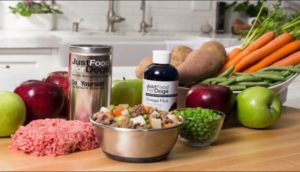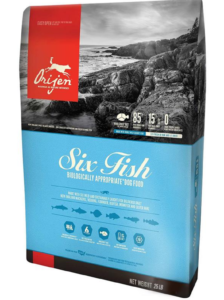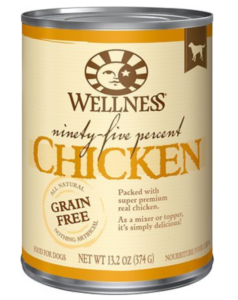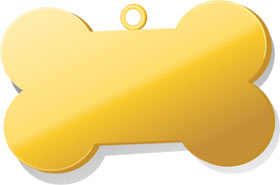We compared the pros and cons of different types of dog food – kibble, homemade, canned, raw, freeze-dried and dehydrated – to make your decision of what to feed your dog a little easier!
What is the best kind of dog food? Is canned food healthier than kibble? Does a homemade dog food diet require as much work as it appears to? Whole Dog Journal developed a comprehensive pros and cons chart for various dog food options you may be considering. Remember: no one dog food is best for all dogs! Consider your dog’s lifestyle and needs and use this chart to help you decide what kind of food your dog should eat regularly. You might also consider feeding your dog a mix of different food types for greater variety in the diet.
Beneath each table you will find a corresponding Whole Dog Journal article that goes into depth about the kinds of dog foods included here. If you’re looking for a quick breakdown of a dog’s nutritional requirements, check out this Dogster page.
1. Homemade Dog Food
Creating a homemade diet for your dog, whether cooked or raw, requires detailed planning and dedication. If you are new to the homemade dog food lifestyle, it is important to familiarize yourself with canine nutrition, and your dog’s individual dietary needs. Mary Straus offers an excellent start in “How to Make Your Own Dog Food“.
| HOMEMADE DOG FOOD | |
| Homemade Pros | Homemade Cons |
| Homemade dog food diets provide a wider variety of healthful foods and nutrients | It can be easy to neglect certain necessary ingredients to your dog’s health when making his food at home – putting him at risk of nutritional deficiency if you’re not vigilant |
| Homemade dog food puts you in control – you know exactly what your dog is eating | Home-prepared dog diets require special attention to meeting the “complete and balanced” recommendations regularly; you will need to use supplements |
| Dogs often prefer the taste of homemade meals to commercial dog food | Cooking for your dogs is a definite time investment for you |
| When you make your dog’s food from scratch, ingredients are minimally processed and fresh | Feeding homemade dog food is potentially more costly than buying commercial food |
| Home cooked meals result in marked health improvements for many dogs | – |
2. Dry Dog Food (Kibble)
The benefits of feeding your dog dry food are many, which explains why so many people buy kibble – and only kibble – for their dogs. Whole Dog Journal has a yearly tradition of taking hard looks at the virtually endless variety of dog foods on the market, breaking down why certain foods are good choices, and why you want to avoid others. Find those reviews here.
| DRY DOG FOOD | |
| Kibble Pros | Kibble Cons |
| Dry dog food is generally the most cost effective diet you can give your dog | When feeding dry dog food, you must trust the company and manufacturer (if different) as to ingredient quality and safe food manufacturing processes – your dog is at the mercy of the pet food manufacturers’ diligence |
| Dry dog food travels and stores well (for a specific period of time) | Kibble often includes low-quality ingredients like meat by-products, sweeteners, and preservatives |
| Commercial kibble includes a guarantee of nutritonal completeness – you don’t need to worry about deficiencies | Dry dog foods are typically carb-heavy |
| Dry dog food is available in a wide range of choices in flavor, sourcing and cost | Dry dog food ingredient quality varies – and it’s almost impossible for consumer to differentiate |
| Kibble requires no preparation | Dog food exiration dates matter! Dry food shouldn’t be more than half-way to the end of its “best by” date, as vitamin levels and preservation diminishes with time |
3. Canned (Wet) Dog Food
Next to dry dog food, canned food may be the most widely fed kind of dog food in the U.S. Dogs tend to enjoy the taste of wet food noticeably moreso than kibble, and the canning process allows you to avoid preservatives and ultra-processing. Like our dry foods, we review the best canned dog food every year.
| CANNED DOG FOOD | |
| Wet Food Pros | Wet Food Cons |
| Canned dog food is more appetizing to dogs than dry food | When feeding canned dog food, you must trust the company and manufacturer (if different) as to ingredient quality and safe food manufacturing processes – your dog is at the mercy of the pet food manufacturers’ diligence |
| Most canned foods use fresh or frozen meats, rather than rendered (more processed) meats | It is common to see meat byproducts in lower-quality wet dog foods |
| There are no preservatives used in wet dog food, yet it is shelf-stable for a long time | Canned dog food is generally more expensive than dry food |
| Wet dog food tends to be less carb-heavy than dry food | BPA may be present in dog food cans – need to look at labels carefully |
| No preparation required with canned food | Wet dog food smells bad to humans |
| Commercial wet dog food includes a guarantee of nutritonal completeness | Wet dog food may contain too much fat for some dogs |
4. Store-Bought Raw Dog Food
For those who want both the health benefits of raw dog food and the convenience of a packaged, nutritionally complete diet, commercial raw dog foods may be an option worth exploring. Let editor Nancy Kerns help you make a decision about feeding raw in “The Evolution of the Raw Dog Food Diet“.
| COMMERCIAL RAW DOG FOOD | |
| Raw Food Pros | Raw Food Cons |
| Store-bought raw dog food uses fresh, unprocessed ingredients, which means maximum nutrient retention for your dog | If feeding commercial raw food, consumers must still trust pet food company as to ingredient quality and safe food manufacturing processes |
| Dog diets that include raw meat are closest to the evolutionary, biologically appropriate diets of wild and ancestral dogs | Raw diets are not good for sick or old dogs because raw meats may contain pathogens – it is a risk for immunocompromised dogs |
| Most commercial raw foods contain no preservatives, or artificial flavors or colors at all | Raw dog food is difficult to travel with |
| Raw food diets show marked health improvements for many dogs | Raw food must be bought frequently, or it takes up a lot of freezer space |
| Commercial raw food includes guarantee of nutritional completeness | Some raw dog foods contain too much fat for some dogs |
| – | Raw dog food must be maintained at safe temperature (no thawing until consumption) |
5. Dehydrated Dog Food
| DEHYDRATED DOG FOOD | |
| Dehydrated Food Pros | Dehydrated Food Cons |
| Most manufacturers of dehydrated dog food use fresh, minimally processed ingredients | Like any store-bought dog food, packaged dehydrated food requires you to trust company and manufacturer (if different) as to ingredient quality and safe food manufacturing processes |
| Dehydrated food retains maximum nutrients after processing – only the moisture is removed | Dehydrated dog food is often extremely expensive type |
| No preservatives are used in dehydrated dog foods, yet they are shelf-stable for a long time | Dehydrated raw foods may still contain pathogens – not good for immunocompromised dogs |
| Commercial dehydrated dog food includes guarantee of nutritonal completeness | – |
6. Freeze-Dried Dog Food
| FREEZE-DRIED DOG FOOD | |
| Freeze-Dried Dog Food Pros | Freeze-Dried Dog Food Cons |
| Freeze-dried dog food is portable, lightweight and extremely shelf stable | Freeze-dried dog food is by far the most expensive kind of dog food; it is actually unaffordable to many |
| Freeze-dried dog food is minimally processed or raw | Some freeze-dried dog food is meant for supplemental or intermittent feeding only; always check the label for “complete and balanced diet“ |
| Highest quality ingredients are the rule in freeze-dried dog food | A complete and balanced freeze-dried dog food may not be available in all pet stores |
| Good for dogs with poor appetite; the taste of freeze-dried dog food is generally irresistible to dogs | – |








Thank you very much for the tips. I’m trying to just give my dog homemade food specially for dogs. It’s a way to keep them healthy.